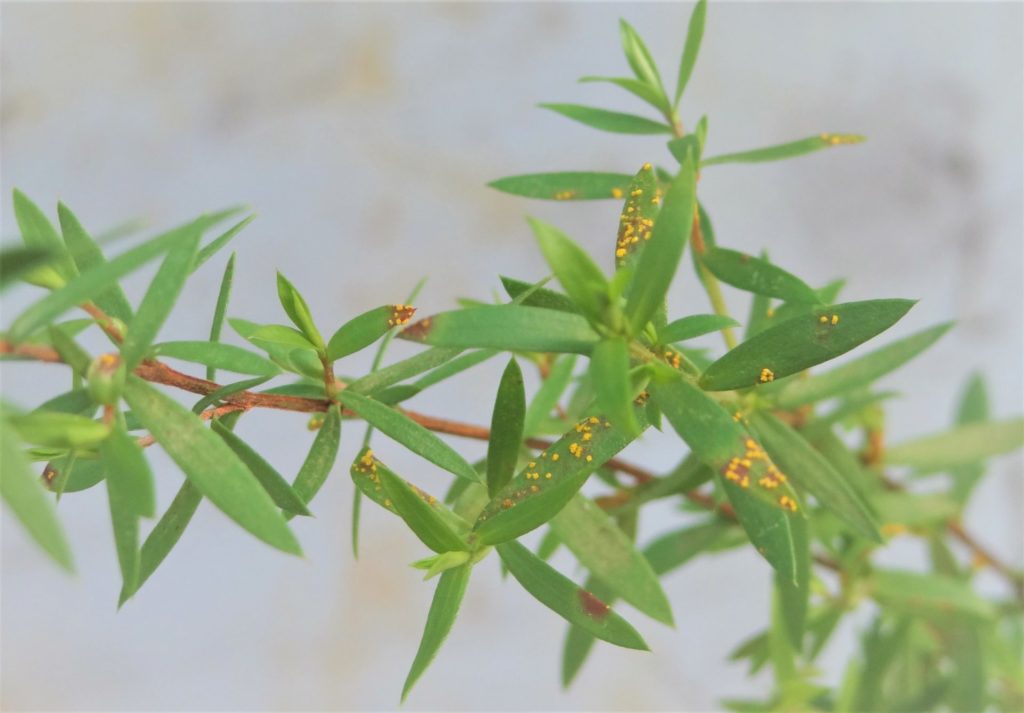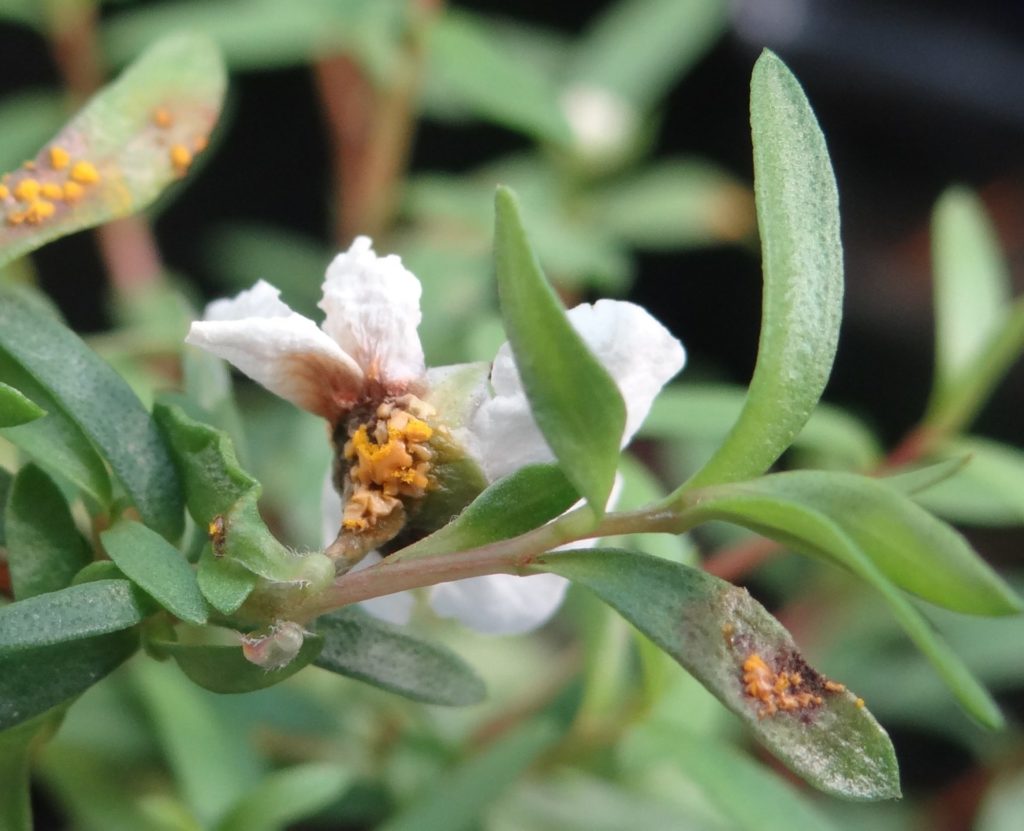Are our indigenous myrtles susceptible to other myrtle rust strains?
Myrtle rust, a plant disease caused by the fungal pathogen Austropuccinia psidii, has multiple strains. Most of these strains are present in South and Central America, which is where the pathogen originated from. Only one of these strains (the “pandemic” strain) made its way to New Zealand in 2017, and it now infects a wide variety of our indigenous and exotic myrtles.

Researchers and communities are starting to see the impacts of the pandemic strain in New Zealand and are aware that our environment and economy could be further harmed if new strains arrive.
To understand how susceptible our myrtle species are to other strains of myrtle rust, researchers embarked on a project funded in part by the BioHeritage National Science Challenge. The research investigated the susceptibility of four indigenous myrtle species to the South African strain of myrtle rust – this is a new strain that is different from those in South America.
The four myrtle species were pōhutukawa (Metrosideros excelsa), mānuka (Leptospermum scoparium), kānuka (Kunzea robusta) and rawiri mānuka (Kunzea linearis).
Seeds were collected from several natural populations around the North Island and sent directly to South Africa. The seedlings were raised to a stage when they could be artificially inoculated with the pathogen. The number of seedlings infected and the disease severity were assessed at the peak of infection.
All four of the species tested were susceptible to infection by the South African strain of myrtle rust.
Pōhutukawa and mānuka were the most susceptible species, while kānuka was the least susceptible. Within the most susceptible species, dieback of the growing tips was recorded in a very short time frame as a result of infection.
Mānuka flower buds and flowers also got infected and prematurely dropped. These observations highlighted the biosecurity threat that additional strains of myrtle rust, in particular this South African strain, represent for our myrtles.

The story doesn’t end here. We know that A. psidii mostly reproduces by cloning itself (making genetically identical copies) but is also able to reproduce sexually on the same myrtle hosts. Sexual reproduction is a booster for pathogen evolution by producing genetic variants that could speed up the emergence of new strains capable of overcoming plant resistance.
Researchers have confirmed that the South African strain of myrtle rust can produce sexual spores on the inoculated New Zealand myrtles. If the South African strain entered New Zealand, it could potentially hybridise with the pandemic strain, accelerating pathogen adaptation and reducing the effectiveness of tools we are developing to manage the disease.
More work is needed to understand the threat posed by other strains of myrtle rust. While this research shows several of our myrtles are susceptible to the South African strain, we don’t know whether this strain, or others, would be more infectious or deadly than the pandemic strain on our native plants.
We also don’t know what role the environment plays in the infection process because research was completed in a glasshouse. Were a new strain to establish in New Zealand, temperature, humidity and rainfall would affect their development.
Our researchers will be continuing to assess the threat of other strains that have not yet arrived in New Zealand. Nevertheless, continued vigilance at our borders is needed to protect against future strains of myrtle rust.
Read the full publication here.
Posted October 2021.